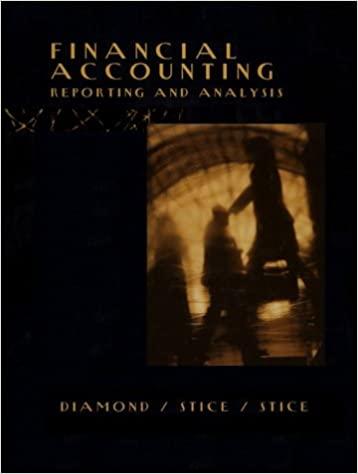Question
VB Plastics, Inc. VB Plastics, Inc. (VBP) specializes in the manufacturing of plastic components. Recently, an opportunity arose to produce a new product TC2001 which
VB Plastics, Inc.
VB Plastics, Inc. (VBP) specializes in the manufacturing of plastic components.
Recently, an opportunity arose to produce a new product TC2001 which appears to have relatively high, sustainable demand.
However, two components of the production process (1) the raw materials molecular structure and (2) the production process itself involve uncertainty. This uncertainty has implications for the quality of finished units of TC2001 (superior versus average), and, ultimately, VBPs profits.
Raw Material Molecular Structure
Raw materials vary in molecular structure. Specifically, raw materials can either be long-form
or short-form.
While suppliers can guarantee that an entire batch of raw materials is of uniform molecular structure (i.e., all of the raw materials in a batch are either long-form or short-form), they cannot guarantee which type a batch is, as molecular structure is difficult to observe accurately.
On average, half of the materials available in the market eventually prove to be long-form structure.
Importantly, only long-form molecularly-structured materials can yield superior quality units (though it is not automatic other factors described below may lead to average quality units, even when long-form inputs are used). If the materials are short-form, the resulting finished units of TC2001 are automatically average quality.
Production Process Choice
VBP could use one of three manufacturing processes.
Process A uses a simplified process and yields average quality units.
Process B uses a different set of machinery, which has better temperature controls, but fails to control pressure in the molding process. Thus, Process B can produce superior quality units, but only if long-form inputs are used and molding pressure falls within acceptable levels. The acceptable threshold is 150 PSI. That is, as long as the pressure is equal to or exceeds 150 PSI, then the process is capable of superior quality units.
Past experience using these Process-B-machines is presented in Table 1.
Table 1 - Observed Pressure on 20 Production Runs (Machines Used for Process 2)
| Date | PSI | Date | PSI |
| 9/2/20 | 147 | 2/13/21 | 153 |
| 9/23/20 | 153 | 2/27/21 | 148 |
| 10/17/20 | 151 | 3/18/21 | 151 |
| 11/1/20 | 153 | 3/29/21 | 154 |
| 11/7/20 | 148 | 4/7/21 | 152 |
| 12/5/20 | 147 | 4/15/21 | 151 |
| 12/17/20 | 154 | 4/24/21 | 148 |
| 1/4/21 | 151 | 5/2/21 | 149 |
| 1/21/21 | 154 | 5/13/21 | 154 |
| 1/30/21 | 146 | 5/23/21 | 155 |
The above denotes pressure readings on the same machines that would be used for Process 2 manufacturing of TC2001 units.
Process C involves machinery that has even greater controls than Process B machinery, including controls over molding pressure. Thus, Process C guarantees superior quality units (assuming that the molecular structure of raw materials is long-form).1
1 VBP currently owns the machines necessary for Process A, B, or C, and these machines currently have capacity. However, given the batch-level manufacturing approach, a single process needs to be selected for each batch, so that the capacity of the other machines can be allocated to other products and production runs.
Profitability Implications
Revenues are a function of whether the final product is of superior quality or average quality. There is sufficient demand for both types of product, but the price charged for each quality level differs. Specifically, superior quality units command a price of $0.65 per kilogram; average quality units command a price of $0.49 per kilogram.
Projected costs are as follows:
Process A: $0.14 per kilogram; $700 setup per batch
Process B: $0.15 per kilogram; $900 setup per batch
Process C: $0.17 per kilogram; $1,100 setup per batch
Assume that the level of production being considered is a single batch of 80,000 kilograms.
Other Information - Potential for Testing
VBP recently learned of an opportunity to test the raw materials after they are purchased, but before they are put into production (i.e., and thus before the production process is selected).
Testing involves a complex process, the costs of which are difficult to anticipate.
The developer of the test offered the following information regarding the average performance of the testing:
For materials known to be long-form, 90% tested as large, and 10% tested as non-large
For materials known to be short-form, 30% tested as large, and 70% tested as non-large
Note: Given the imperfect nature of the test, the developer does not refer to test results as long-form and short-form, but rather the corresponding categories of large and non-large, respectively.
Assignment
Analyze the decision scenario using a series of decision models, including the following: (1) a decision model corresponding to no advanced information about inputs molecular structure,
(2) a decision model corresponding to the imperfect information about inputs molecular structure (as described in the case), and (3) a decision model corresponding to perfect information about inputs molecular structure.
The goal of your analysis is to support the decision of a risk-neutral decision-maker trying to (1) identify what processes he/she/they should use given available information and (2) assess the value of different types of information (i.e., imperfect vs. perfect).
Step by Step Solution
There are 3 Steps involved in it
Step: 1

Get Instant Access to Expert-Tailored Solutions
See step-by-step solutions with expert insights and AI powered tools for academic success
Step: 2

Step: 3

Ace Your Homework with AI
Get the answers you need in no time with our AI-driven, step-by-step assistance
Get Started


